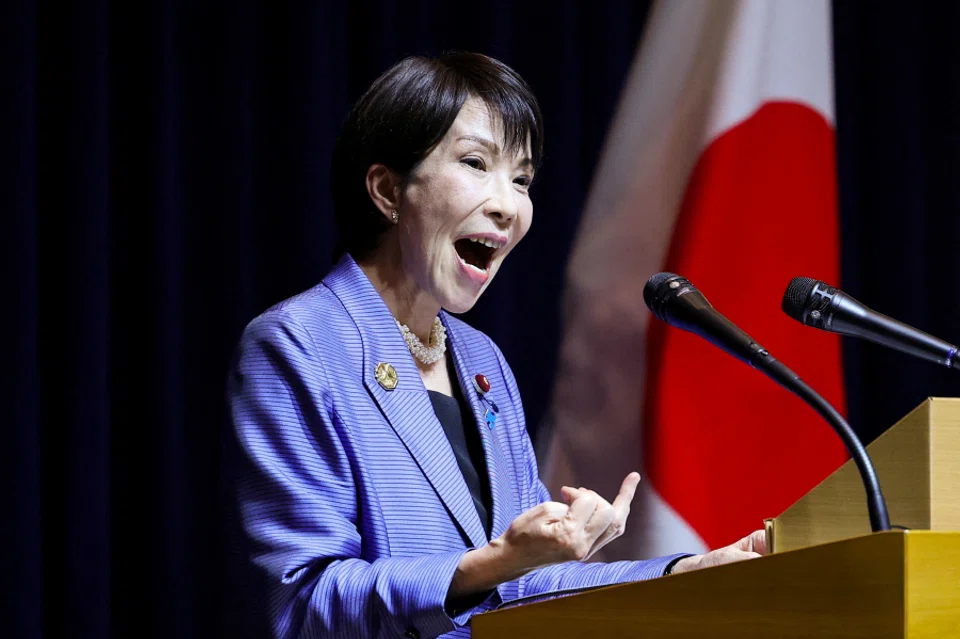Japanese academic: What Sanae Takaichi meant by ‘a survival-threatening situation’
Did Japanese PM Sanae Takaichi give away Japan’s strategic ambiguity with her comments on a “survival-threatening situation”? Japanese academic Shin Kawashima gives his views.

On 7 November 2025, Prime Minister Sanae Takaichi made controversial remarks at the lower house Budget Committee meeting, stating in response to a question about a possible Taiwan emergency that “if warships are used and armed force is involved, it could undoubtedly become a survival-threatening situation”.
Previous Japanese prime ministers have never explicitly stated whether a so-called “Taiwan emergency” would constitute a “survival-threatening situation”. The lack of an explicit statement has led to mixed reactions within Japan.
Supporters argue that a Taiwan emergency naturally constitutes a survival-threatening situation for Japan and that Prime Minister Takaichi merely stated the obvious. Others contend that strategic ambiguity is unnecessary when responding to a Taiwan emergency and that clarifying Japan’s position would be more effective. Opponents, however, view such remarks as provocative and potentially destabilising for East Asia. They argue that maintaining strategic ambiguity is essential and that such statements should not be made.
Japan may invoke its counterattack capabilities in the first two categories: armed attack and survival-threatening situations.
What constitutes a survival-threatening situation?
The pros and cons of this issue will likely remain a subject of debate. However, based on ongoing discussions outside Japan, there appears to be a misunderstanding of the phrase “potentially leading to a survival-threatening situation”, which is central to invoking Japan’s right to collective self-defence. I would like to clarify two key points.

First, Japan’s policy regarding the invocation of its right to collective self-defence is to “confirm the situation”. Situations are classified, in order of decreasing severity, as armed attack, survival-threatening, important influence, or grey-zone. Japan may invoke its counterattack capabilities in the first two categories: armed attack and survival-threatening situations.
An armed attack occurs when there is a direct attack on Japan. In the context of a Taiwan emergency, an attack on Taiwan would qualify as an armed attack if it extended to nearby Japanese territory, such as Yonaguni Island. This raises the question: what exactly constitutes a survival-threatening situation?
It refers to a “situation in which the Japan Self-Defense Forces (JSDF) can retaliate alongside the US and other nations based on their right of collective self-defence, even if Japan itself is not under attack”. In order for a survival-threatening situation to be declared and for the JSDF to take retaliatory action, the following three conditions must be met: first, an armed attack occurs against a country closely related to Japan; second, there is a clear danger to Japan’s existence; and third, there are no other appropriate means available. When these conditions are met, the government will resort to the “minimum necessary use of force”.
Importantly, Prime Minister Takaichi clearly stated that Taiwan could be considered a “country closely related to Japan”. Previously, there had been questions about whether a country could be considered a “related country” without diplomatic ties. However, in July 2015, former Prime Minister Abe responded to a question from the Diet indicating that the definition of a “related country” does not depend on whether diplomatic ties exist. Therefore, designating Taiwan as a “related country” is not a significant contradiction to the previous view. Nevertheless, Prime Minister Takaichi’s clear reference to a specific case is noteworthy.
Second, since the “minimum necessary use of force” is a right to collective self-defence in response to an armed attack on a country closely connected to Japan, the question arises: which countries does this right apply to?
Tough call: when Japan can invoke right of collective self-defence
Second, since the “minimum necessary use of force” is a right to collective self-defence in response to an armed attack on a country closely connected to Japan, the question arises: which countries does this right apply to?
On 29 July 2015, at the upper house Special Committee on Peace and Security Legislation, then-Foreign Minister Fumio Kishida was asked about the criteria for the “other country with close ties to Japan” as defined in the survival-threatening situation. Kishida stated, “Generally, it refers to a country that shares a common interest in addressing an armed attack from outside as a common threat and has expressed a willingness to cooperate with Japan in addressing it.”

Regarding specific countries that fall under this definition, Kishida explained, “These countries are not specified in advance but are determined based on the circumstances when an armed attack occurs.” Kishida also said, “I believe that the United States is highly likely to fall under this definition, but the likelihood of other countries doing so is significantly limited.”
... she did not say that Taiwan falls under the category of “a country with which Japan has a common interest and that has expressed a willingness to cooperate with Japan in addressing a common threat” — the target of the right of collective self-defence.
Prime Minister Takaichi recently stated that “if warships are used and armed force is involved, it could easily become a survival-threatening situation”. She stated that a “Taiwan emergency” constitutes such a situation and indicated that Taiwan falls under the category of “a country with close ties to Japan.” However, she did not say that Taiwan falls under the category of “a country with which Japan has a common interest and that has expressed a willingness to cooperate with Japan in addressing a common threat” — the target of the right of collective self-defence.
Based on previous interpretations, the right of collective self-defence is not anticipated between the JSDF and the Taiwanese military. Japan has no alliance treaty or diplomatic relations with Taiwan.
Leaving options open
A more appropriate consideration is the anticipated right of collective self-defence between the US and Japan. While the JSDF and the US military have conducted joint training, there has basically been no direct joint operational training between the JSDF and the Taiwanese military. In short, even if a Taiwan emergency triggered Japan’s right of collective self-defence, it would be assumed that this right would only be exercised between the JSDF and the US military. This does not mean, however, that the Taiwanese military would operate alongside the JSDF.
However, at the Special Committee meeting mentioned above on 29 July 2015, then-Foreign Minister Kishida stated regarding the exercise of the right of collective self-defence, “This will be determined individually and specifically at the time an armed attack occurs, and we do not intend to predetermine which countries will be affected, or which will not. Furthermore, I do not think it is appropriate to publicly state in advance which countries will be affected and which will not.”
This could be interpreted as leaving open the possibility of exercising the right of collective self-defence in the future, depending on the circumstances, with countries other than the US included. This is merely a theoretical point, however, and in reality, discussions considering countries other than the US have scarcely been held.
Regardless of whether one agrees or disagrees with Prime Minister Takaichi’s remarks, it is believed that discussions should be based on these points.





